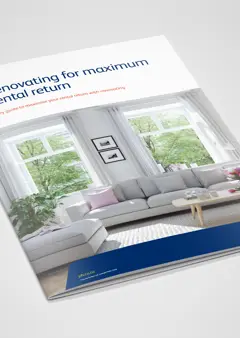Healthy Home Standards, are you aware of how this impacts you?
Property Management

By continuing, you agree to our terms of use and privacy policy
Instructions on how to reset your password will be sent to the email below.
Your password reset link has been sent. Please check your inbox and follow the instructions provided.
Property Management

As a landlord, you'll need to ensure that your rental property meets the minimum requirements around ventilation, heating, insulation, moisture ingress and draught stopping. If you fail to meet these standards, the result could be a fine of up to $4,000.
The introduction of the Healthy Home Standards is an excellent opportunity to add value to your investment and keep tenants around for the long-term - reducing costly tenant turnover for your property.
Each rental is now required to have a fixed heating device or devices capable of keeping the main living room (for example a lounge, family room or dining room) temperature at 18 degrees Celsius. Your heating device must have at least 1.5kW in heating capacity. Choose an efficient, healthy and affordable heating solution. In most cases, a heat pump, wood burner, pellet burner or flued gas heater will suffice. Not sure what size heater you need? Use this online heating assessment tool.
Unfortunately, many New Zealand homes offer minimal or no insulation. And, as a result, properties can be cold and damp during winter, costing more to heat and prone to mould. Every rental property is now required to have both ceiling and underfloor insulation with a minimum thickness of 120mm or to meet the 2008 building code. Your insulation will need to be inspected and certified by an expert, and, it will need to be topped up if it doesn’t meet the standards. (Unless you have recently installed insulation to meet the Insulation Regulations 2016. If you have met the 70mm requirement in the ceiling, you are not required to lift the level to 120mm) Find out whether you need to upgrade the insulation in your rental property by using this online tool.
Keep rental properties dry and healthy by having at least one openable window, door or skylight in the dining room, living room, kitchen and bedrooms. Together, the size of the openable windows, skylights and entries must be at least 5% of the floor area of that room. There must be an appropriately sized extractor fan that ventilates extracted air to outdoors in all rooms which have a shower, bath or indoor cooktop. You will need to get quotes from builders to install extractor fans and windows where necessary if your rental doesn’t meet these ventilation standards. Don’t forget to ask installers for the details of the fan diameters, ducting and flowrate in writing, so that you can show that they’re compliant. (In some instances, the installation of a ventilation system may not be possible without significant modifications to the property – in these instances, talk to your property manager or registered tradesman)
Fixing draughts is an easy way to keep heating bills down, rental properties warm and dry as well as preventing moisture build-up. All gaps or holes greater than 3mm in walls, ceilings, windows, floors and doors that cause noticeable draughts must be blocked, and this includes any unused chimneys or fireplaces. If the gaps are minor, you may be able to do fill these yourself with insulation tape. If this isn’t an option, you will need to get a quote from a builder or handyman to complete the work.
Dampness and moisture in a property can lead to poor health and can be destructive to the quality of a property. Landlords are required to install a ground moisture barrier (polythene sheet) if it’s possible to do so. This polythene sheet can be bought from most building retailers and sits between the foundations/earth and the subfloor stopping moisture from creeping upward into the property. Landlords are also required to ensure sufficient drainage for the removal of storm-water, ground-water and surface water, including an appropriate outfall. The drainage system must include guttering, downpipes and drains for the removal of water from the roof. An insulation expert or handyman will be able to provide you with a quote for installing a moisture barrier. A plumber can assist you with checking and installing drainage.
Landlords are expected to ensure that the rental property complies with the Healthy Homes Standards within 90 days of any new tenancy from 1 July 2021. However, the current HHS for each property, whether it meets the regulations or not, needs to be stipulated on the Tenancy Agreement after July 2020.
The requirements will expand to include:
If you’re uncertain, it’s worth talking to a professional property manager. With a wealth of knowledge on both the local market and the new regulations, a property manager can provide you with useful insights to ensure your rental ticks all the right boxes.
Arranging a meeting with a professional property manager is easy. At Property Brokers, we offer free rental appraisals to landlords who want to check the health of their rental and find new ways to maximise its return.
From the top of the North through to the deep South, our salespeople are renowned for providing exceptional service because our clients deserve nothing less.
Managing thousands of rental properties throughout provincial New Zealand, our award-winning team saves you time and money, so you can make the most of yours.
With a team of over 850 strong in more than 88 locations throughout provincial New Zealand, a friendly Property Brokers branch is likely to never be too far from where you are.
